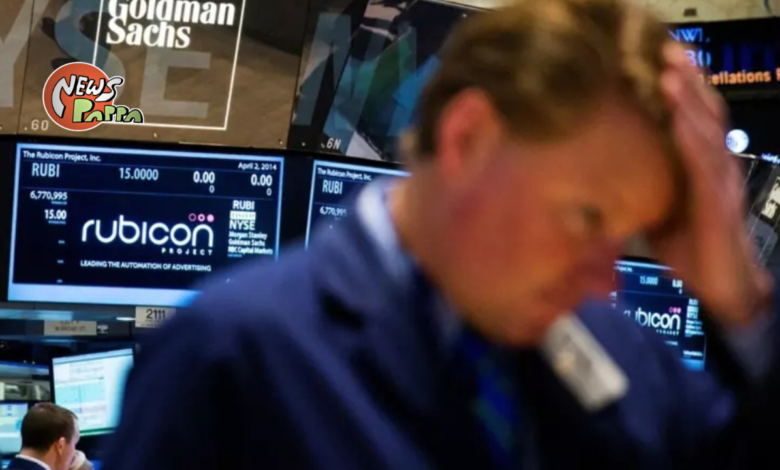The yield on 10-year U.S. Treasury bonds is 4.5%, and UBS unveils “Scenario 1” with a total return of 20%

Volatility in U.S. Treasury Market Creates Investment Opportunities:
The U.S. Treasury market experienced significant turmoil in September, with the price of the 10-year U.S. Treasury note plummeting and the yield rate surging to nearly a 16-year high.
This reflects concerns in the market that the Federal Reserve (Fed) may indeed allow interest rates to rise higher and for a longer duration. Analysts believe that despite the bond market’s recent struggles, it could also present investors with substantial profit-making opportunities in the coming year.
According to a report by UBS’s global wealth management team, investors who held U.S. 10-year Treasury bonds when yields recently spiked to around 4.5% could potentially achieve a total return of up to 20% in one year. However, there’s a prerequisite for this scenario: the U.S. economy must enter a recession, leading investors to flock to the U.S. government bond market, which has a total value of approximately $25 trillion, to seek safety. This rush into U.S. debt would trigger a surge in its value.
Matheri, the Chief Investment Officer of UBS Global Wealth Management North America, led the team behind this analysis. Their report suggests that U.S. yields are still well above the long-term equilibrium level. Consequently, once the overall economic outlook becomes favorable for the bond market, there’s room for yields to decline.
The UBS team envisions three possible scenarios for the U.S. bond market one year from now:

1. Most Likely Scenario: The U.S. 10-year Treasury bond yield falls to 3.5%, resulting in a total return of 14% during this period.
2. Optimistic Economic Scenario: The 10-year yield rate drops back to 4% due to strengthened economic growth, leading to a total return rate of 10% during the period.
3. Economic Pessimistic Scenario: If the U.S. economy experiences a recession, the 10-year yield rate may fall to 2.75%, and the total return rate during the period could reach 20%.
A surge in the U.S. Treasury markets could benefit funds tracking U.S. Treasuries and the broader bond market. Data from FactSet reveals that as of the 29th, the popular iShares 20+ Year U.S. Treasury Bond ETF (code: TLT) has declined by 10.9% this year, while the iShares U.S. Core Aggregate Bond ETF (code: AGG) has fallen by 3%.
In recent years, the U.S. Treasury market has been caught in a tug-of-war between bullish and bearish forces. “Bond vigilantes,” unhappy with the U.S. deficit, have been demanding higher yields, while hedge funds and general investors have been purchasing U.S. bonds since the Fed initiated interest rate hikes last year. The Fed’s recent warning that interest rates might need to remain elevated for a longer period triggered fears, resulting in a surge in U.S. bond yields.
On the 29th, the U.S. 10-year Treasury bond yield retreated to 4.572%, having risen to 4.597% on the 28th. This marked an increase of nearly 50 basis points for the month of September. Additionally, the 30-year U.S. Treasury yield dropped to 4.709% on the 29th, while the 2-year yield hovered around 5.0582%.
September Stock Market Struggles: Key Figures and Prospects for October:
September has historically been a challenging month for stock market investors, and this year has proven no exception. Let’s delve into the numbers to understand the extent of the stock market’s struggles this September, as outlined by Barron’s:
6%: The Nasdaq Composite Index experienced a 6% decline over the past month. This decline, particularly noteworthy because the Nasdaq is tech-heavy, marked its second consecutive monthly drop in September, with performance not seen this poor since the same period last year.
This raises lingering concerns among investors regarding market conditions for 2022.
While the S&P 500 and the Dow Jones Industrial Average also fell in September, the Nasdaq’s steeper decline was attributed to technology stocks. The S&P Information Technology Index, in particular, bore the brunt of this decline, falling over 7% this month and ranking among the poorest performers.
4.6%: The U.S. 10-year Treasury yield increased by 4.6% by the end of September. Over the past 30 days, this yield has risen approximately twice as much as the 2-year U.S. Treasury yield.
This surge reflects the Federal Reserve’s outlook of raising interest rates “higher and longer,” sparking renewed interest in the bond market and affecting valuations. The rise in U.S. Treasury yields also negatively impacted bonds moving counter to the trend, alongside high-growth technology stocks.
Traders’ expectations regarding the Fed’s policy rate peak have not changed significantly. However, after the Fed’s monetary policy meeting on September 19th and 20th, there is now a belief that interest rate cuts next year will be less frequent than initially predicted in early September.
On a positive note, this narrowing suggests that the “yield curve inversion,” often a recession warning, has lessened.
14 (years): The yield on U.S. 10-year Treasury Inflation-Protected Securities (TIPS) reached 2.24%, marking the highest level in approximately 14 years (since 2009). This indicates that investors acknowledge the possibility of prolonged inflation and are willing to invest in protection.
7: Over the past decade, the S&P 500 Index has closed higher in October for seven years. Despite the stock market’s September struggles, this trend suggests that the upcoming month might bring a turnaround.
While September posed challenges for stock market investors, October holds the possibility of a more favorable landscape, as history has shown.




